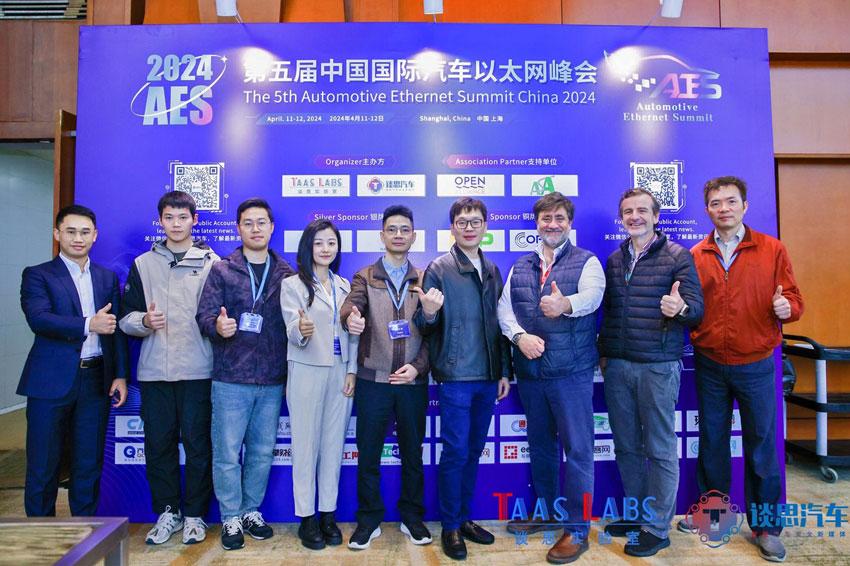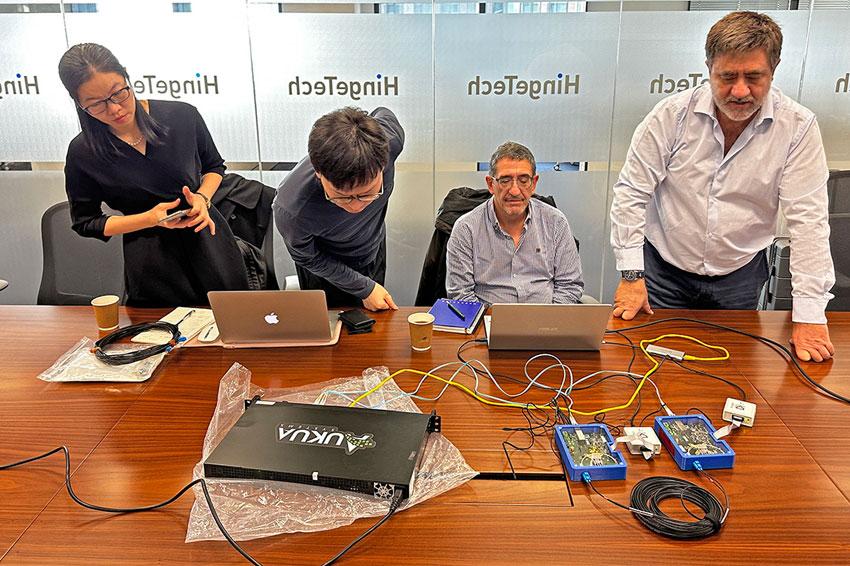KDPOF collaborates with Hinge Technology
16.05.2024 - A strategic partnership aims to solve key technical issues in the industrial application of optical communications in vehicles.
For the development and mass production of in-vehicle electrical and electronic architecture of optical fiber communications, Hinge Technology utilizes ICs from KDPOF to design integrated optical modules combined with automotive-grade connectors and optical fiber harnesses to design the electrical electronic architecture (EEA).
Using KDPOF components, Hinge Technology has developed an optical fiber camera. It can be paired with an optical fiber surround view host, resulting in a high-speed optical communications 360-degree surround view system or a reverse image system. The camera utilizes a 2MP high-quality image sensor for data collection, which is processed and transmitted via plastic optical fiber to the controller for image display or processing. Optical fiber cameras can achieve a stable transmission distance of up to 40 meters and deliver high-definition, real-time images. By comparison, LVDS coaxial cameras have no relay transmission capability and are limited to 15 meters.
In addition to developing optical EEA for vehicle communications, KDPOF and Hinge Technology will extend their partnership to the application of optical communications technology in battery management systems (BMS) for electric vehicles. The companies are collaborating on the development and manufacturing of optical modules and system-on-chips (SoC). They plan to introduce optical-electronic integrated chip packaging technology in regions of China with well-developed automotive industry clusters, establishing FAB facilities capable of packaging chips with bandwidths ranging from 1 to 10 gigabits.
Utilizing chiplet technology solutions, they are jointly researching and developing advanced chip-on-panel (COP) packaging technology for low-cost, high-reliability optical processors, optical modules, and complementary optical components tailored for automotive optical communications. This initiative aims to ensure production capacity for various automotive optical communications products. Together they plan to develop and manufacture higher-bandwidth optical communications semiconductors in the future, driving continuous upgrades of EEA architecture for the global automotive industry.
Furthermore, Hinge Technology conducts relevant functional verification on mass-produced vehicle models, including assessing packet loss rates, signal transmission losses, optical module heat dissipation, optical module and optical connector optical path coupling solutions, and optical connection reliability in various road environments. Based on the results of real vehicle verification, Hinge Technology develops corresponding solutions and provides feedback on technical issues related to optical chips to KDPOF for resolution.
Further reading: Fiber optics connectivity based on long-wavelength VCSELs, wileyindustrynews.com, 09 January 2024 • R. Pérez-Aranda (KDPOF) & J. Pankert (Trumpf Photonic Components): Optical neurons to interconnect sensors and artificial brains in autonomous vehicles – Fiber optics connectivity based on long-wavelength VCSELs and fully-integrated and adaptive electronics, PhotonicsViews 21(1), February/March 2024, first published online: 01 December 2023; DOI: 10.1002/phvs.202300047 (online open)
Contact
KD – Knowledge Development for POF, S.L.
Ronda de Poniente 14, 2ª Planta
28760 Tres Cantos
Spain
+34 91 804-3387






